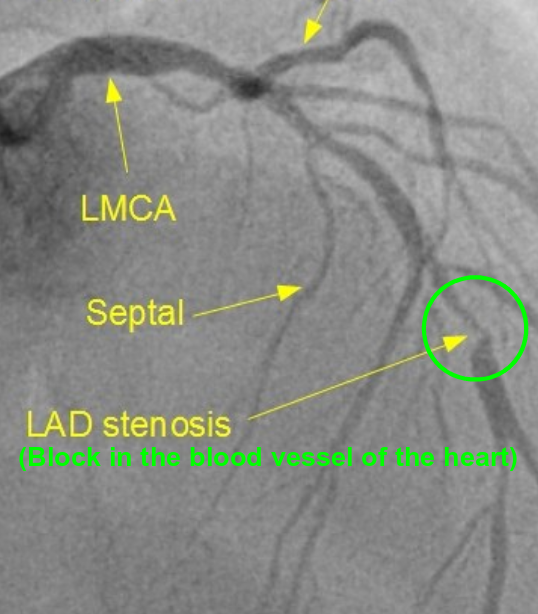Blood vessels of the heart
Blood vessels supplying oxygenated blood to the heart muscle are known as coronary arteries. The two important coronary arteries are the right coronary artery and the left main coronary artery. Left main coronary artery has two important branches – left circumflex coronary artery and left anterior descending coronary artery. Each of these give several branches to supply the heart muscle. Both the left and right coronary arteries arise from the root of the aorta, the biggest blood vessel arising from the heart, carrying blood to the whole body.
Blood returning from the heart muscles, containing deoxygenated blood are known as coronary veins. The biggest coronary vein is the coronary sinus, which drains into the right atrium, the upper right chamber of the heart.
Left anterior descending artery (LAD)
LAD is so called because it descends on the front (anterior) surface of the heart. It is by far the most important blood vessel supplying the heart muscle so that blockage can be catastrophic. Hence it has earned the name ‘widow maker‘ artery. Blockage of LAD causes anterior wall myocardial infarction – damage to the heart muscle in the front portion of the left ventricle, which is the lower muscular chamber of the heart. Significant damage to the musculature of the left ventricle can impair the pump function of the heart very much so that the blood pressure can fall very low.
Left circumflex coronary artery (LCX)
LCX, as the name implies, curves around the left border of heart, to run in a groove between the upper and lower chambers of the heart (atrioventricular groove or AV groove). It supplies blood to the left side and back of the left ventricle and left atrium (upper left chamber of the heart).
Right coronary artery (RCA)
RCA gives branches to the right atrium, right ventricle (lower right chamber of the heart) and part of the back side of the left ventricle. Blood supply to two important electrical structures of the heart can be from the RCA. The upper one is known as sinus node (SA node), which is the usual pacemaker of the heart, causing the heart to beat regularly. The lower one is atrioventricular node (AV node) which is situated at the junction between the upper and lower chambers of the heart (AV Junction).



Reblogged this on Cardiophile Blog.